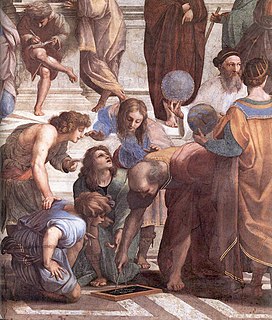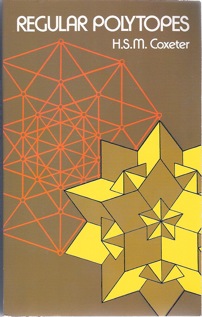| Truncated 24-cell honeycomb | |
|---|---|
| (No image) | |
| Type | Uniform 4-honeycomb |
| Schläfli symbol | t{3,4,3,3} tr{3,3,4,3} t2r{4,3,3,4} t2r{4,3,31,1} t{31,1,1,1} |
| Coxeter-Dynkin diagrams |
|
| 4-face type | Tesseract Truncated 24-cell |
| Cell type | Cube Truncated octahedron |
| Face type | Square Triangle |
| Vertex figure |  Tetrahedral pyramid |
| Coxeter groups | , [3,4,3,3] , [4,3,31,1] , [4,3,3,4] , [31,1,1,1] |
| Properties | Vertex transitive |
In four-dimensional Euclidean geometry, the truncated 24-cell honeycomb is a uniform space-filling honeycomb. It can be seen as a truncation of the regular 24-cell honeycomb, containing tesseract and truncated 24-cell cells.

A four-dimensional space or 4D space is a mathematical extension of the concept of three-dimensional or 3D space. Three-dimensional space is the simplest possible generalization of the observation that one only needs three numbers, called dimensions, to describe the sizes or locations of objects in the everyday world. For example, the volume of a rectangular box is found by measuring its length, width, and height.

Euclidean geometry is a mathematical system attributed to Alexandrian Greek mathematician Euclid, which he described in his textbook on geometry: the Elements. Euclid's method consists in assuming a small set of intuitively appealing axioms, and deducing many other propositions (theorems) from these. Although many of Euclid's results had been stated by earlier mathematicians, Euclid was the first to show how these propositions could fit into a comprehensive deductive and logical system. The Elements begins with plane geometry, still taught in secondary school as the first axiomatic system and the first examples of formal proof. It goes on to the solid geometry of three dimensions. Much of the Elements states results of what are now called algebra and number theory, explained in geometrical language.

In geometry, a honeycomb is a space filling or close packing of polyhedral or higher-dimensional cells, so that there are no gaps. It is an example of the more general mathematical tiling or tessellation in any number of dimensions. Its dimension can be clarified as n-honeycomb for a honeycomb of n-dimensional space.
Contents
It has a uniform alternation, called the snub 24-cell honeycomb. It is a snub from the construction. This truncated 24-cell has Schläfli symbol t{31,1,1,1}, and its snub is represented as s{31,1,1,1}.

In geometry, an alternation or partial truncation, is an operation on a polygon, polyhedron, tiling, or higher dimensional polytope that removes alternate vertices.
In four-dimensional Euclidean geometry, the snub 24-cell honeycomb, or snub icositetrachoric honeycomb is a uniform space-filling tessellation by snub 24-cells, 16-cells, and 5-cells. It was discovered by Thorold Gosset with his 1900 paper of semiregular polytopes. It is not semiregular by Gosset's definition of regular facets, but all of its cells (ridges) are regular, either tetrahedra or icosahedra.

In geometry, the Schläfli symbol is a notation of the form {p,q,r,...} that defines regular polytopes and tessellations.



















